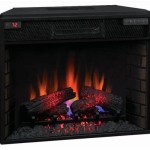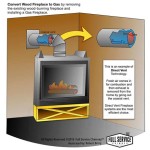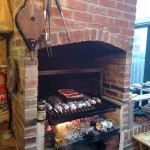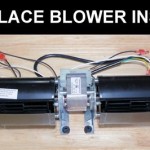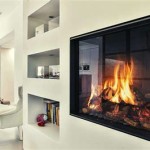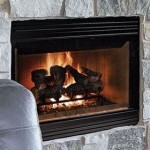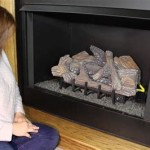Replacement Thermocouple For Gas Fireplace: A Comprehensive Guide
The gas fireplace offers a visually appealing and efficient heating solution for many homes. A critical component within this system is the thermocouple. This safety device plays a crucial role in ensuring the gas valve remains open only when a pilot light is actively burning. When a thermocouple malfunctions, the fireplace may fail to operate correctly, posing potential safety hazards. Therefore, understanding when and how to replace a thermocouple is vital for maintaining the reliable operation of a gas fireplace.
This article provides a comprehensive guide to understanding the function of a thermocouple, identifying common problems, selecting the appropriate replacement, and performing the replacement process safely and effectively. It aims to equip homeowners and technicians with the necessary information to address thermocouple-related issues in gas fireplaces.
Understanding the Thermocouple's Function
The thermocouple is a thermoelectric device used to measure temperature. In a gas fireplace, it acts as a safety mechanism, designed to shut off the gas supply if the pilot light is extinguished. Its operation relies on the principle of the Seebeck effect, which states that a temperature difference between two dissimilar electrical conductors or semiconductors produces a voltage difference between them.
Specifically, the thermocouple consists of two different metal wires joined at one end, forming the "hot junction." This hot junction is positioned directly in the flame of the pilot light. When heated, the dissimilar metals generate a small DC voltage, typically in the millivolt range (mV). This voltage is then transmitted along the wires to the gas valve, holding it open. If the pilot light goes out, the hot junction cools, the voltage drops below a critical threshold, and the gas valve automatically closes, preventing gas from escaping into the room.
The design of the thermocouple is relatively simple, but its functionality is crucial for safety. Without a properly functioning thermocouple, a gas leak could occur if the pilot light is extinguished, posing a significant risk of fire or explosion. Therefore, regular inspection and timely replacement are essential.
Identifying Thermocouple Problems
Several symptoms can indicate a failing or faulty thermocouple. Recognizing these signs is the first step in determining if a replacement is necessary. Common indicators include:
- The pilot light refuses to stay lit: This is the most common symptom. If the pilot light ignites but extinguishes as soon as the control knob is released, the thermocouple may not be generating sufficient voltage to keep the gas valve open.
- The pilot light stays lit intermittently: In some cases, the pilot light may stay lit for a short period before going out. This intermittent behavior suggests that the thermocouple is weakening and producing a fluctuating voltage.
- The gas valve requires prolonged holding: If the control knob needs to be held down for an unusually long time (e.g., more than 30 seconds) to keep the pilot light lit, it could indicate a weak thermocouple.
- Soot buildup on the thermocouple: Excess soot accumulation can insulate the thermocouple from the pilot light flame, reducing its efficiency and voltage output.
Before concluding that the thermocouple is faulty, it is important to rule out other potential causes, such as a dirty pilot orifice, a blocked pilot tube, or a malfunctioning gas valve. These components can also contribute to pilot light problems. A qualified technician can perform a thorough inspection to pinpoint the exact cause.
Testing the thermocouple's voltage output with a multimeter is a reliable way to confirm its functionality. A healthy thermocouple should produce a voltage within a specified range, typically between 20 and 30 mV when heated by the pilot light. A reading significantly below this range indicates a need for replacement.
Selecting the Correct Replacement Thermocouple
Choosing the right replacement thermocouple is crucial for ensuring proper function and compatibility with the gas fireplace. Thermocouples are not universal; different models vary in length, thread size, and voltage output. Selecting the incorrect thermocouple can lead to improper installation and potentially unsafe operation.
The following factors should be considered when selecting a replacement:
- Length: The thermocouple must be long enough to reach from the gas valve to the pilot light assembly without excessive bending or stretching. Measure the existing thermocouple carefully to determine the required length.
- Thread Size: The threaded fitting that connects the thermocouple to the gas valve must match the thread size on the valve. Common thread sizes include 11/32-32 and M9x1. The thread size can often be identified by examining the existing thermocouple or consulting the gas fireplace manufacturer's documentation.
- Voltage Output (mV): While most thermocouples operate within a similar millivolt range, it's crucial to select a replacement with a compatible output. Refer to the gas fireplace's technical specifications or the original thermocouple's markings for guidance.
- Type of Connection: Note if the thermocouple has a screw-in connection or a clip-on connection to the gas valve and select the replacement accordingly.
The best approach is to obtain the original manufacturer's replacement part number from the gas fireplace's manual. If this is not possible, providing the make and model number of the fireplace to a reputable parts supplier will help ensure that the correct replacement thermocouple is selected. Using generic or universal thermocouples can be risky if they do not meet the specific requirements of the fireplace.
It is also advisable to purchase thermocouples from reputable suppliers who offer quality products and warranties. This ensures that the replacement thermocouple meets safety standards and provides reliable performance.
The Replacement Process: A Step-by-Step Guide
Replacing a thermocouple involves several steps and requires careful attention to safety procedures. It is essential to turn off the gas supply to the fireplace before commencing any replacement work. If unsure about any step, consulting a qualified gas appliance technician is highly recommended.
Step 1: Shut Off the Gas Supply
Locate the gas shut-off valve connected to the gas fireplace. This valve is typically located near the fireplace or in the gas supply line leading to it. Turn the valve to the "off" position to completely shut off the gas supply. This is a crucial safety precaution to prevent gas leaks during the replacement process.
Step 2: Access the Thermocouple
Remove the fireplace's front panel or access door to expose the gas valve and pilot light assembly. Consult the fireplace's owner's manual for instructions on how to safely remove the access panel. In some models, screws or clips may need to be removed. Exercise caution to avoid damaging any components during removal.
Step 3: Disconnect the Old Thermocouple
Locate the thermocouple connected to the gas valve and the pilot light assembly. Carefully disconnect the wire from the gas valve. Depending on the model, this may involve unscrewing a threaded fitting or disengaging a clip. Once disconnected, gently remove the thermocouple from its mounting bracket on the pilot light assembly.
Step 4: Install the New Thermocouple
Insert the new thermocouple into the mounting bracket on the pilot light assembly, ensuring that the hot junction is positioned correctly in the pilot light flame. Connect the other end of the thermocouple to the gas valve. Tighten the threaded fitting or engage the clip securely. Ensure that the connection is snug but not overtightened, as this could damage the threads.
Step 5: Test the New Thermocouple
Turn the gas supply back on by opening the shut-off valve. Follow the manufacturer's instructions for lighting the pilot light. Typically, this involves pressing and holding the control knob while igniting the pilot light with a match or lighter. Once the pilot light is lit, continue holding the control knob for the recommended time (usually 20-30 seconds). After releasing the knob, the pilot light should remain lit consistently. If the pilot light goes out, recheck the thermocouple connections and repeat the lighting procedure. If the problem persists, there may be another issue with the gas fireplace system.
Step 6: Reassemble the Fireplace
Once the new thermocouple has been successfully tested and the pilot light is functioning correctly, carefully reassemble the fireplace by replacing the front panel or access door. Secure any screws or clips that were removed during disassembly.
Step 7: Perform a Leak Test
After reassembling the fireplace, it's crucial to perform a leak test on the gas connections. A simple bubble test can be conducted using a solution of soapy water. Apply the soapy water solution to all gas connections, including the thermocouple connection at the gas valve and the gas supply line connections. If bubbles form, it indicates a gas leak. Immediately turn off the gas supply and tighten the connections or contact a qualified technician to address the leak before resuming operation.
Important Safety Considerations
Working with gas appliances carries inherent risks. It is crucial to prioritize safety throughout the thermocouple replacement process. If there are any doubts about one's ability to perform the replacement safely and effectively, seeking assistance from a qualified gas appliance technician is strongly recommended. Ignoring safety precautions can lead to gas leaks, fire hazards, or even explosions.

Thermo Thermopiles Friendly Fires

Thermo Thermopiles Friendly Fires

Gas Fireplace Won T Stay Lit Magic Touch Mechanical

Gas Fireplace Thermocouple Replacement Parts Thermopile Practical Durable

Gas Fireplace 24 Thermocouple 750 Millivolt Replacement Com

Gas Fireplace 24 Thermocouple 750 Millivolt Replacement Com

Gas Fireplace Thermocouple Replacement Parts Thermopile Practical Durable

Gas Fireplace 24 Thermocouple 750 Millivolt Replacement Com

Replace Your Fireplace Thermocouple Pilot Assembly Step By

Gas Fireplace Won T Stay Lit Magic Touch Mechanical

